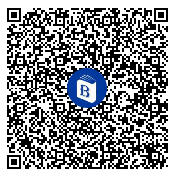The measurement-based quantum computing paradigm relies on entangling the qubits of a register into a graph state and on measuring subsets of such register in order to condition the unmeasured qubits. The computation therefore, instead of being carried on only by one-qubit and two-qubits logic gates, is largely based on entanglement and measurement processes. Compared to the gate model architecture, in MBQC the overhead in terms of computation resources to synthesize logical qubits is higher. While gate model relies on a register of logical qubits whose number is set at the beginning of the computation and remains constant during the computation, in the MBQC the input qubits outnumber the output ones, due to the destructive nature of measurement processes. Still, we analytically prove and experimentally confirm that MBQC can be efficiently emulated on a classical software, reaching equal loads with respect to the gate-based approach in terms of average runtime and storage of memory. The numerical results confirm that despite the potential computational overhead due to the high entanglement of the initial graph state, the MBQC paradigm carries similar computational complexity, both in terms of time and memory, with respect to the gate-based approach.
 扫码关注我们
扫码关注我们
 求助内容:
求助内容: 应助结果提醒方式:
应助结果提醒方式:
